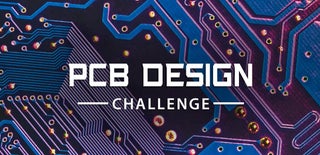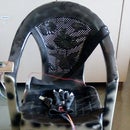Introduction: Smart Watchz With Corona Symptoms Detection and Data Logging
This is a Smartwatch with Corona symptoms detection using LM35 and Accelerometer with data logging on the server. Rtc is used to show time and sync with the phone and use it for data logging. Esp32 is used as a brain with cortex controller with Bluetooth and wifi for connectivity. Lm35 is used to sense the temperature of the human body for fever as a parameter to corona. An accelerometer is used to detect motion for cough and sneeze. By applying machine learning, we can get to known about the 2nd and 3rd parameters of the corona. After that data is log on a server for every one second and if condition get worst then alert the user.
Step 1: Main Schematic
Esp32 is used as a brain with cortex 32 bit controller with Bluetooth and wifi for connectivity. Lm35 is used to sense the temperature of the human body for fever as a parameter to corona. An accelerometer is used to detect motion for cough and sneeze. The pulse sensor is used to get heart approx. information. OLED is used to Display battery, time and status. Led is used for charging and controller state indication. Buttons are used for user input. RTC is used for timing. The buzzer is used to alert the user. After all, components are gathered in schematic then start schematic for USB.
Step 2: USB, Etc's Schematic
USB is used for data communication with pc for programming and charging. Charging IC is used to charge 3.7v Lithium Battery with 500ma current. Led is used to indicate the status of charging. Regulator IC is used to supply power to ESP and sensors. CP2102 is used to bridge the interface between USB and USART of ESP 32 for programming. After the schematic is fully done then shift to BOM.
Step 3: Bill of Material
Generate BOM from the schematic for the procurement of components from local or online vendors. After BOM is fully done then shift to PCB placement.
Attachments
Step 4: PCB Board Outline
Start Drawing PCB board outline for cutout and shape of the board is decided based on an outline. After the Board outline is done shift to PCB component placement.
Step 5: PCB Component Placement
Then place component with big first and all others. Placement of OLED, ESP32, LM35 and charging IC is critical, so take care of it. Placement of the buttons and USB should be on edge. After PCB placement is done shift to PCB routing.
Step 6: Top Routing
Top layer is used for ground plane, so route mostly from bottom layer. Start routing section are as follow,
First : USB and Charging IC.
Second : CP2102
Third : ESP32
Fourth : LM35, Accelerometer, OLED
Fifth : Buttons, LED
Sixth : RTC, Pulse sensor, ON/OFF switch
Seven : Rest other.
After Top routing is done shift to Bottom routing.
Step 7: Bottom Routing
The bottom layer is used for Signal Routing. Route long length track first and then short length with minimum length and vias. After bottom routing is done shift to Final PCB touch up.
Step 8: Final PCB Touch Up
Make polygons for supply and ground. Make adjustments for top overlay and bottom overlay to set properly. After Final PCB touch up is done shift to PCB 3D view.
Step 9: PCB 3D View
We can view our PCB in 3D view with mostly component and board outline before sending to manufacture. Generate Gerber files for manufacturing and send it to your vendor like PCB power.
Step 10: Thank You.
Hurry, Your PCB is done and starts coding using Arduino IDE for ESP32 for hardware functioning.
If you need this watch, then mail me rajeshjat56@hotmail.com and send you via courier.

Participated in the
PCB Design Challenge










